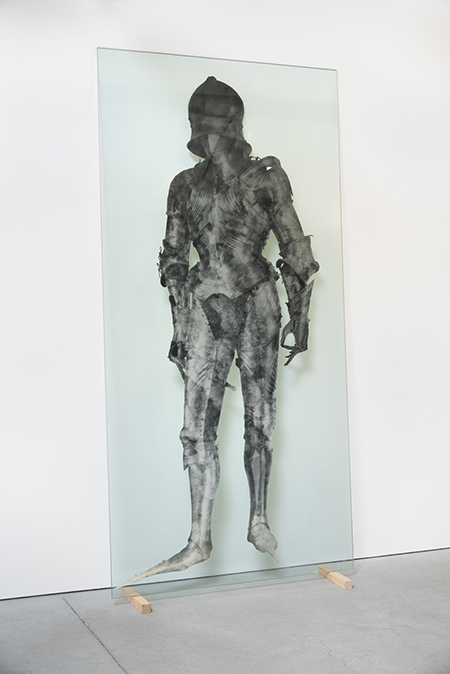
Continuing through June 30, 2023
Ecological concerns, once disparaged as the alarmism of elitist scientists, are now widely accepted as factual even as we edge demonstrably closer to climatic tipping points. Bay Area artist John Roloff has made environmentalism one of the cornerstones of his diverse art practice since the mid-1970s, when he finished his studies in art and geology at UC Davis. “Ecology in an expanded frame,” i.e., an understanding of the interrelationship between human and natural processes, the “global metabolism,” has informed Roloff’s multifarious practice in sculpture, site-specific installations, and visionary conceptual works, all of which draw upon the fine-art ceramic tradition established in the Bay Area, its longtime political progressivism, and its aesthetic embrace of sociopolitical content (with and without overt polemics). His current show, “Sentient Terrains,” showcases the artist’s considerable breadth and depth, even as it reminds us that late-Anthropocene-Era humans can no longer believe that dominating nature autocratically is our prime objective.
Modernist abstraction abandoned illusionism in order to create or reveal new realities arising from the formal relationships among shapes, forms, and color. Conceptual art makes a similar claim on the viewer: to find meaning in material that may not be explicitly related, visually. This show, presented as a miniature museum retrospective, assembles four bodies of work: nine long vertical-format “Meta-Site” flags, digitally printed on satin; digital inkjet print assemblages and videos depicting various site studies and proposals that call to mind scientific or architectural presentations; images on glass panels, set atop against wooden blocks and leaning against the gallery walls; and ceramic sculptures set in long vitrines that depict wedges of seemingly excised landscapes, ruined and ravaged, but regenerating.
If the exact content of the works is ambiguous to science or geology novices, they are nonetheless visually compelling. The “Meta-Site Flags,” depicting the vascular facies between chemical substances — lava, orchid, chlorophyll, hemoglobin, and hematite — have the look of a heraldic banner due to their vertical format. The elements are grafted together by a spiky sawtooth cut suggestive of dovetail wood joinery. Roloff’s site studies and proposals for the Great Valley Complex of California, a San Francisco Wharf Complex, and even the old Geary Street location of Gallery Paule Anglim (circa 2001) situate specific regional locations within the wider context of vast natural forces and immense time scales.
Immediately appealing are the more pictorial works, including two large glass panels, both dated 1996-2023, bearing digitally printed black and white images of historical or art-historical motifs. “Turban/Coal (Witness/Seance)” conjoins and juxtaposes the face of a man in a red turban (Jan Van Eyck’s 1433 “Portrait of a Man”) with what appears to be semi-liquid coal slurry: carbon to carbon, dust to dust? Equally enigmatic and fascinating is “Biotic Knight (Witness),” featuring the full-sized image of a knight of slender build who, printed onto glass as he is, appears to hover in space, awaiting commands.
Roloff’s geological tableaux, composed of ceramic, glass, silicone, and wood, are decidedly romantic and surrealist evocations of blasted landscapes. Their shattered wedge shapes are like fractured ship hulls. Caspar David Friedrich’s “the Sea of Ice” (1823-4) comes to mind, and so too the war-torn landscapes of English World War II artist Paul Nash, especially “Totes Meer, Dead Sea” (1940).
In “Vector Ship: Vascular Sea” sculptures are set within Plexiglas boxes as though they are relics or artifacts. Their fragmented forms, evoking architectural and biological references, are arrayed along exposed, wedge-shaped ridges that are here and there bisected by glass shards and half-buried by snow or ash that has been sprayed red or black by explosions. We can feel the horrors of war and desolation by their presence, but they also convey a terrible beauty — dramatically, without melodrama.
